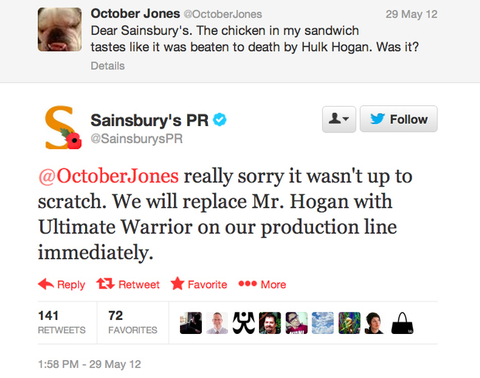How to manage negative posts on social media
Social media is now more reliable for feedback than the traditional forms. It encourages direct, honest and frank comment from customers – unfortunately, these aren’t always going to be positive.
It’s not always clear what the best course of action is when receiving negative comments and many managers today don’t know how to react appropriately or effectively.
Instead of ignoring these messages which could damage your brand, here are a few tips to help you manage negative posts on social media.
How to manage negative posts:

1. IT monitoring: Keep a close eye on all social media conversations relating to your products, company, last name, etc. at all times.
There are a number of social media monitoring platforms available to help you keep track of your accounts and any activity as it happens, when it happens.
2. Respond quickly: Before you answer, do your research and find out who’s engaging with you. Are they a real person (i.e. not spam), a competitor, or an important client? If it is urgent, respond and let them know that you will deal with the request immediately.
3. Communication: It’s important for the respondent to know that they are dealing with the correct person. Ask the respondent to follow your site and give more specific details via a direct message.
Where possible, you should always try and take the conversation offline, e.g. offer to email or call to discuss the problem.
4. Calm any conflict: While remaining respectful and polite, respond appropriately when dealing with those who may take an aggressive approach in their response.
5. Recognize your fault: If your company is in fact at fault, recognize the error as soon as possible, apologize and, where appropriate, make an offer of good will. Hopefully those who have made the complaint will acknowledge the genuine mistake and appreciate your honesty.
6. Be attentive to your followers: People who post negative comments about your product/service could be using them. This could be of advantage. Listen to any critique and help your followers by providing good service. Responding and offering help in good time will help create brand loyalty.
7. Establish rules: You can create rules concerning behavior in the comments. If a rude message appears, you can modify your settings and be notified by any negative comments.
8. Humour: Where appropriate, answer with humour. Self-mockery could be used as a defence mechanism to reduce tension during an exchange on social media – but only when appropriate!

What NOT to do:
We’ve reported previously on how a Manchester restaurant hit headlines with a badly handled response to a complaint from a hen party. Barry H’s decision to brand his customers ‘chav cheap trash’ can teach us a lot about how not to handle complaints online.
The response claimed that the group was the “chaviest worst most vile people ever to grace our restaurant” and that it would be “the best thing ever” if they didn’t return. The best way to handle a complaint, no matter how frustrating, is to allow your anger to settle before replying. The restaurant’s owner told the Manchester Evening News: “The entire incident is regrettable and it has been both investigated and dealt with internally.”
Don’t bury your head under sand: Sometimes, accepting critique and putting your hands up when at fault could help you earn the respect of your followers, and prevent any “de-following.”
Social media demands responsiveness – and remember that ignoring a problem doesn’t mean it will go away.
Disputes with customers on social media, or failing to admit when you’re at fault, only casts your business in a more negative light. The worst response to negative feedback is to close down a social media page, like “47 King Street West” – it can be seen as an acknowledgment of fault or a disdain for customer feedback.
What can also be a recipe for disaster is blocking someone who has complained. They have been vocal in the first instance, and are just as likely to comment negatively about your blocking them, should you do so.
And you?
Hopefully, we’ve demonstrated how to limit damage when mistakes are made on social media, but if you’ve got any more thoughts, be sure to give us a shout on Twitter.
And if you’re looking for more in-depth tips on getting the most out of social media, be sure to download our complementary guide today:
Selected industry experts bring you insight and expert advice, across a range of sectors.
Subscribe for free to receive our fortnightly round-up of property tips and expertise
Selected industry experts bring you insight and expert advice, across a range of sectors.
Subscribe for free to receive our fortnightly round-up of property tips and expertise




